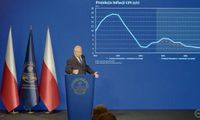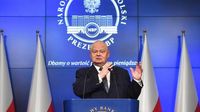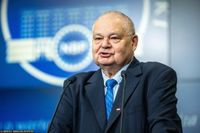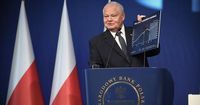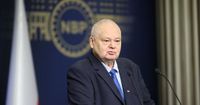On April 2, 2025, the Monetary Policy Council (RPP) of Poland concluded its two-day meeting, deciding to maintain the current interest rates, a move that aligns with market expectations. This decision marks the 19th consecutive month that the reference rate of the National Bank of Poland (NBP) remains at 5.75 percent, a level it has held since October 2023.
The RPP also confirmed that the lombard rate is set at 6.25 percent, the deposit rate at 5.25 percent, the rediscount rate for bills of exchange at 5.80 percent, and the discount rate for bills of exchange at 5.85 percent. These rates are critical as they influence borrowing costs for consumers and businesses across the country.
Adam Glapiński, the president of the NBP and chairman of the RPP, previously stated during a March briefing that it was too early to discuss potential interest rate cuts. His stance was echoed by NBP Vice President Marta Kightley, who emphasized that current economic conditions do not warrant any easing of monetary policy.
As the RPP prepares for its next monthly briefing scheduled for April 3, economists are closely monitoring Glapiński's rhetoric, especially in light of recent inflation data. According to a preliminary estimate released by the Central Statistical Office (GUS), inflation for March stood at 4.9 percent year-on-year, a figure that marks the third consecutive month of this reading. This rate is notably lower than the NBP's projection of 5.4 percent for the first quarter of 2025.
"The fact that inflation is currently following a lower trajectory will certainly attract the attention of the Council," commented Agata Filipowicz-Rybicka, chief economist at Alior Bank, in an interview with Interia Biznes.
Current expectations among economists suggest that the RPP may begin easing its monetary policy as early as the third quarter of 2025. Alior Bank estimates that any potential cuts could total around 75 basis points. Conversely, ING Bank Śląski anticipates that a decision to reduce rates might occur at the Council's July meeting, as the new inflation projection is expected to show a downward trend in consumer prices.
Monika Kurtek, chief economist at Bank Pocztowy, also points to July as a pivotal month for possible monetary easing. "July, with its new inflation and GDP projections, could mark the beginning of a monetary easing cycle in Poland," she stated.
Despite the current rates remaining unchanged, there is growing optimism regarding the potential for reductions in the coming months. Recent data indicates that inflation may trend lower than previously anticipated, although the RPP has cautioned that inflation will likely remain above its target in the near term.
In its communication, the RPP noted that the inflationary pressures in the coming months will be influenced by previous increases in energy prices, as well as hikes in excise duties and the costs of administered services. "In the coming months, inflation is expected to remain above the NBP's target, driven by these factors," the RPP stated.
Market analysts are increasingly confident that the first interest rate cut of 2025 could occur in July. Financial institutions predict that the WIBOR 3M rate, a key benchmark for loans, may decrease to 4.6 percent within the next nine months, suggesting that the average loan installment could drop by approximately 310 PLN.
Jarosław Sadowski, director of the analysis department at Rankomat.pl, highlighted that initial, albeit minor, reductions in mortgage rates could be observed as early as April due to the WIBOR 6M rate falling to 5.76 percent, the lowest level since November 2023.
"If these forecasts hold true, a loan of 400,000 PLN over 30 years could see its installment decrease by 310 PLN by the end of the year," Sadowski noted.
However, while the prospect of rate cuts is enticing for borrowers, the RPP remains cautious. Analysts from Dom Maklerski XTB have pointed out that geopolitical uncertainties, particularly regarding tariff changes, continue to weigh on the Council's decisions. The upcoming presidential elections in May could also delay any potential cuts until June.
In the context of political pressures, both Karol Nawrocki and Rafał Trzaskowski have publicly called for the RPP to consider lowering interest rates. Nawrocki emphasized that such a reduction would provide relief for millions of borrowers, while Trzaskowski reiterated his long-standing appeal to the RPP for lower rates.
As the RPP navigates these complex economic waters, the balance between controlling inflation and supporting economic growth remains a critical challenge. The next few months will be crucial in determining the path of Poland's monetary policy, especially as the Council prepares to release its official communication detailing the rationale behind its latest decision.
In summary, while the current interest rates remain unchanged for now, the economic landscape is shifting, and the potential for rate cuts is becoming increasingly plausible. With inflation showing signs of easing, the RPP may soon find itself at a crossroads, needing to decide whether to maintain its cautious approach or take decisive action to stimulate economic growth.

